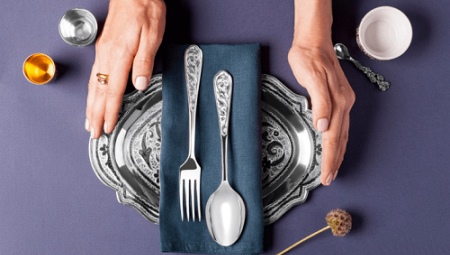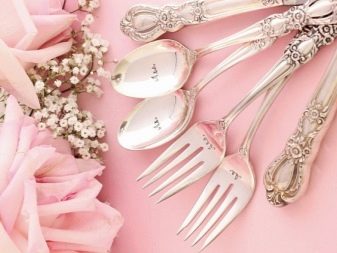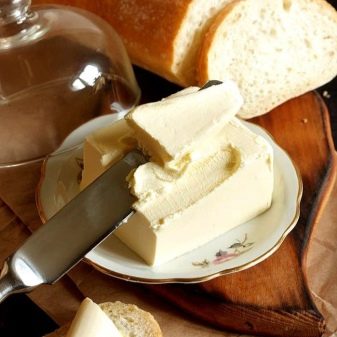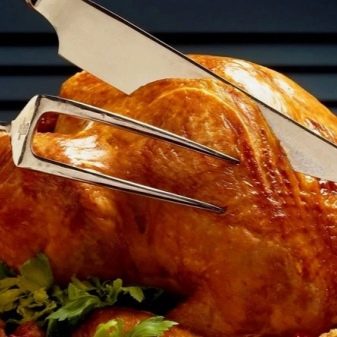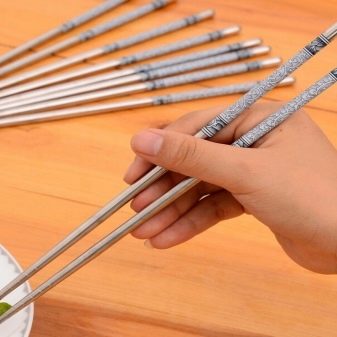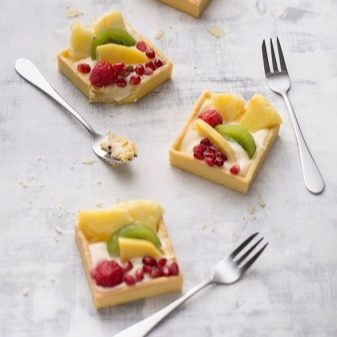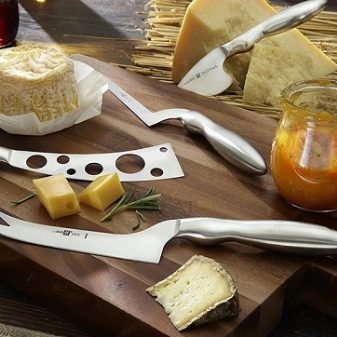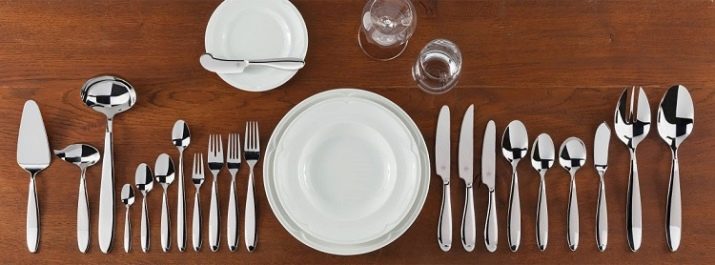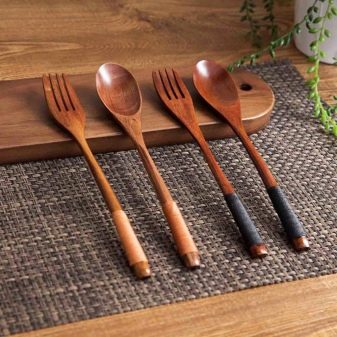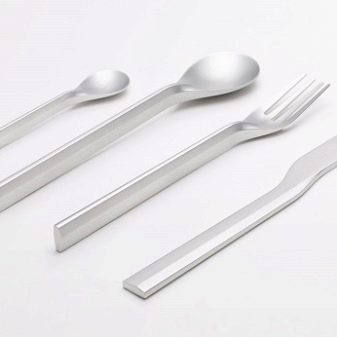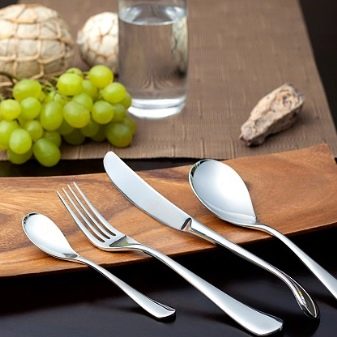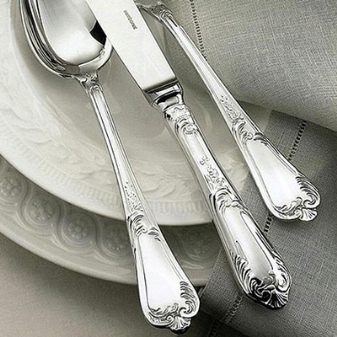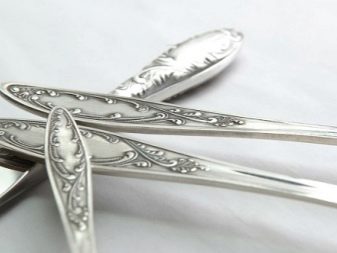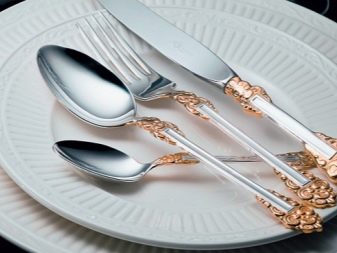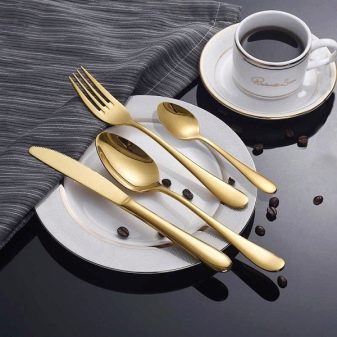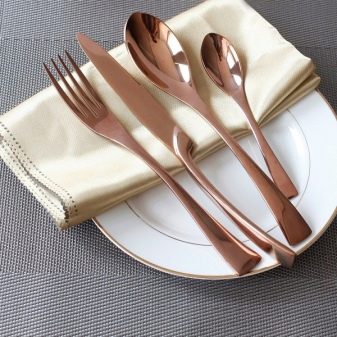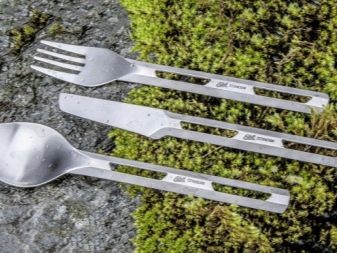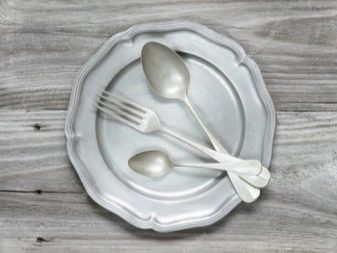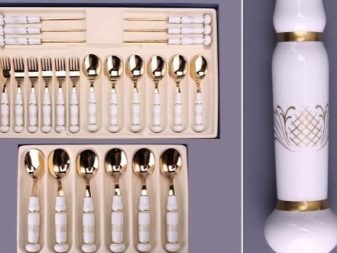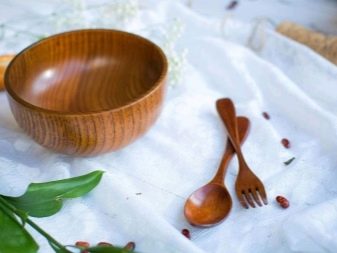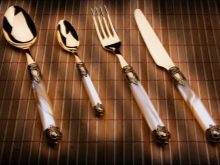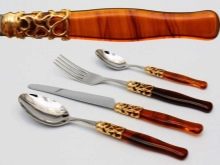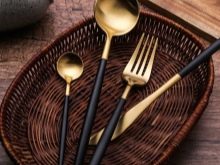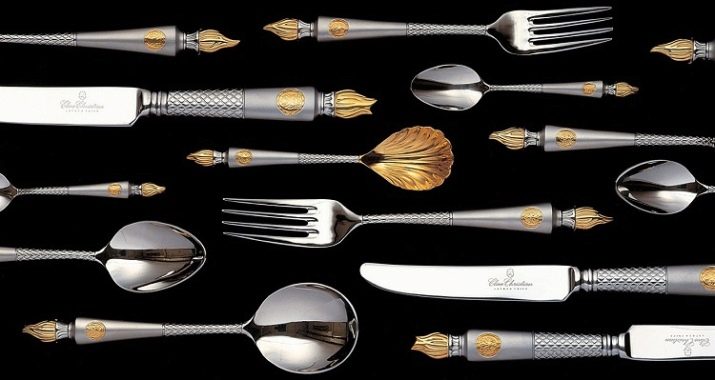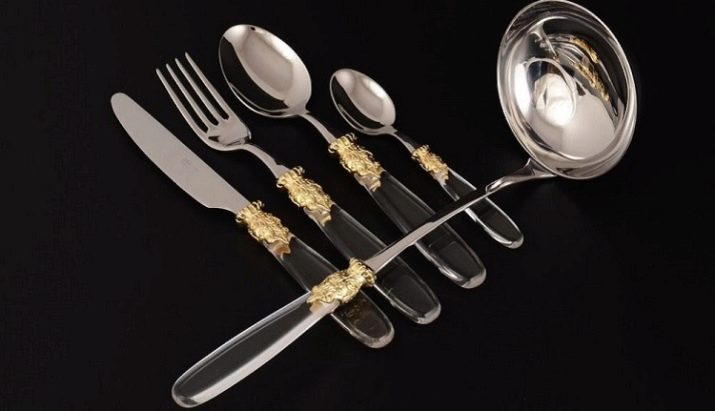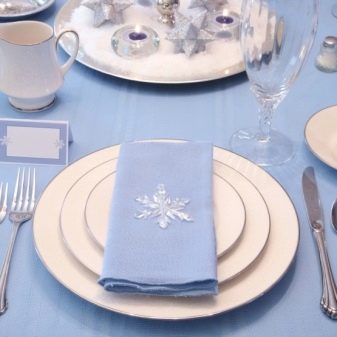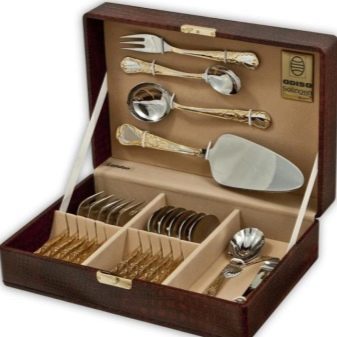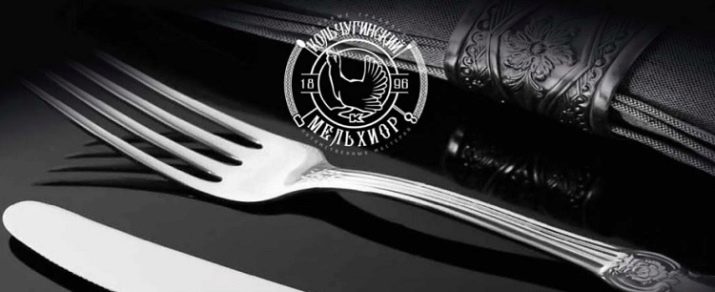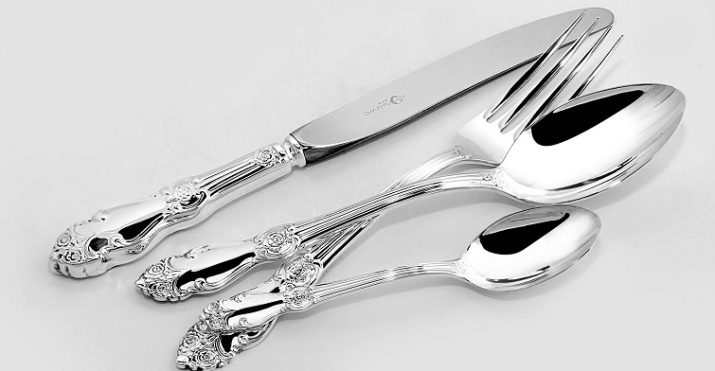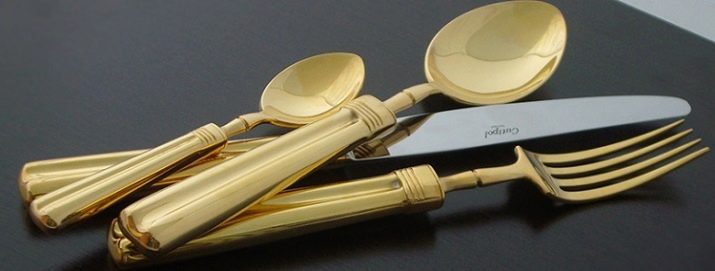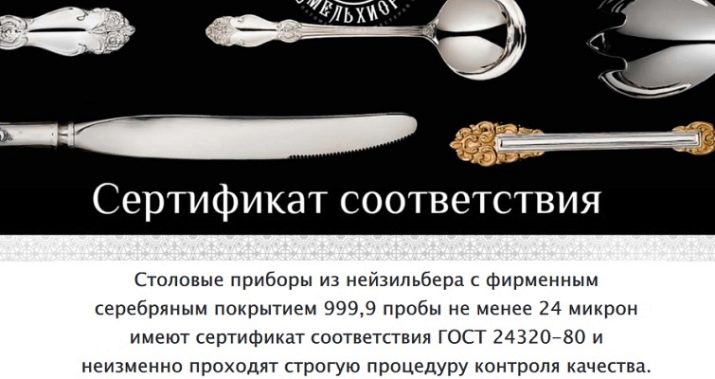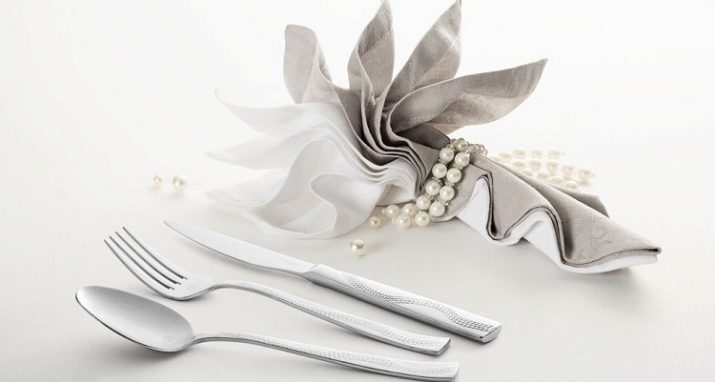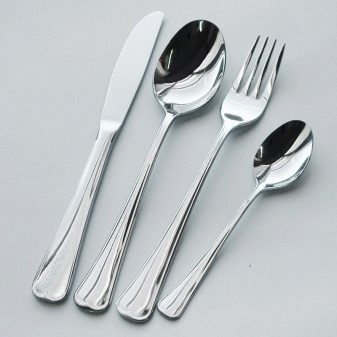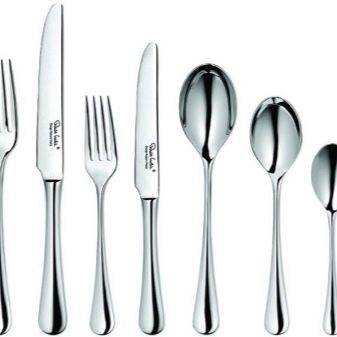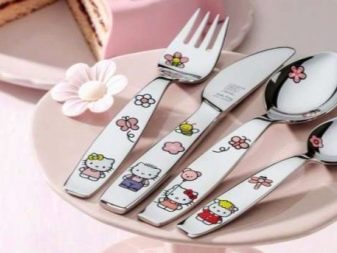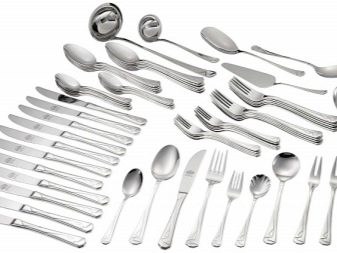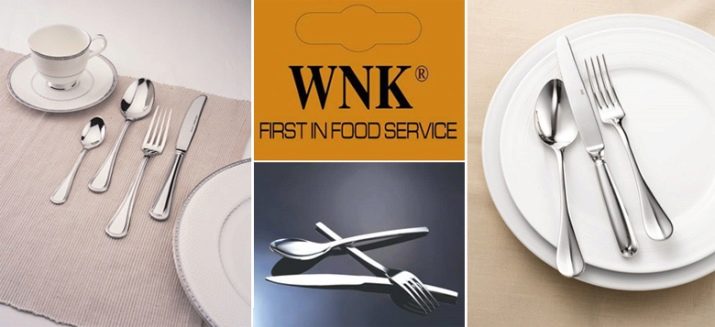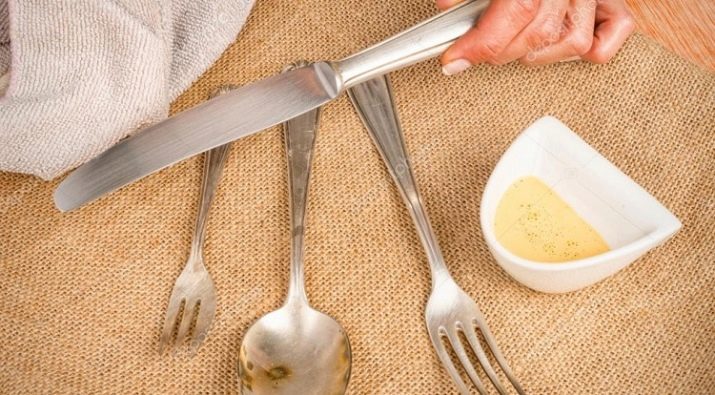Breakfast, lunch and dinner should bring joy to people - this is an axiom. However, success depends not only on products, culinary skills, furniture and design, on the mood of people. It is very important to choose the cutlery that directly affect the psychological comfort during the meal.
Varieties
Under the cutlery is usually meant tools used for eating at the table. Depending on the material, these devices are used in a normal or solemn atmosphere. Cutlery is sold either singly or in sets for 6 people (or a different number of consumers). The main called tools that are used individually during the meal. Auxiliary role is played by tools used by many people. They are used to:
- slice;
- lay out;
- shift;
- sort products.
The main group of cutlery includes:
- tablespoons and teaspoons;
- forks;
- chopsticks;
- table knives;
- fish knives;
- snack devices;
- dessert equipment (set of forks, knives and spoons).
A knife for desserts is approximately equal to the diameter of the dessert plate. The spoon should be slightly shorter. A fork in this case is crowned with 3 teeth. Dessert knives and forks are used to serve:
- sweet pie;
- pieces of cheese of various sizes;
- chunks of watermelon.
Fruit appliances are smaller in size than those intended for dessert. The fruit fork has not 3, but 2 cloves. Her pen is the same as the knife. A coffee spoon is used not only for making coffee, but also when working with tea, fruit cocktails, even with grapefruits and soft-boiled eggs.
Additional cutlery includes:
- knives for butter;
- knives forks and knives-saws;
- forks for sprats, for oysters and mussels, for lemon slices;
- lobster needles;
- spoons for salt, for salads;
- ladles;
- confectionery tongs, nutcracker, for asparagus;
- spatulas for caviar, for pate, for hot and cold fish dishes, for confectionery.
Materials
Of course, all these functions can be performed only when using cutlery from a suitable material. Wooden or with wooden handles fixtures look very good, but not suitable for everyday use. The reasons are simple:
- inconvenience;
- propensity to absorb moisture;
- insufficient durability.
because wooden spoon can be used for periodic celebrations or for trips to the fishing out of town. The home kitchen needs more durable and stable products. And one of the candidates for this role has long been aluminum appliances. However, now such tools are hopelessly outdated. You can meet them only in isolated cases.
The reason is not in the toxic properties of aluminum. This metal is not strong enough, in addition, quickly loses its original color and shape. For the same reasons, tin cutlery has long been obsolete.
Most of these products are made of stainless steel. This alloy is called "medical" because of the minimal risk of reactions with:
- acids;
- alkalis;
- salts.
The optimal grade is 18/10, which indicates the presence of 18% Cr and 10% Ni. This combination allows you to guarantee:
- high fortress;
- attractive shine;
- resistance to aggressive environment;
- minimal risk of corrosion.
Elite stainless steel cutlery, of course, do not.Melchior (a combination of nickel with copper and manganese) was used in their production in the past. The use of such an alloy for kitchen utensils ceased in the 1950s. Nickel silver is almost the same nickel silver, but with the addition of zinc, and this alloy is softer than nickel silver.
German silverware is always made with gilding, with a silver layer or with blackening. And if consumers need flawless classics, then they should give preference to silver cutlery. They are often included in exclusive kits. The lack of silver products (and gold, of course, too) is a significant burden. But if in the first place for a person his prestige and reputation of a solid host, the choice is obvious. If you just need to show your security, and the taste is not so important, you can stop the choice on gold-plated appliances.
Brass cutlery tools conduct heat very well, and at the same time look extremely attractive. Under the influence of copper, the vital activity of pathological microorganisms is suppressed. But it is important to understand that contact of Cu with vegetables, fruits (usually containing many acids) causes the destruction of vitamins.
A thin film on the surface of copper makes it much more difficult to care for it - after each use, it is necessary to wash off the pollution.
Occasionally you can find table tools made of titanium. This metal is highly valued for its extraordinary strength and resistance to destructive, caustic substances. Other advantages of titanium utensils are:
- environmental and health safety;
- lack of foreign tastes from cooked food;
- zero hazard allergies;
- pleasant tactile sensations;
- external beauty (especially if the products are also anodized).
A separate discussion deserve tin devices. Tin is completely safe and in no way affects odors and taste sensations. All that is made of tin, does not rust. Even changes in the tin surface (the appearance of a patina) due to contact with air look attractive. But all that is made of tin will have to be very thoroughly cleaned, washed in hot water.
Porcelain can be a very good addition to the kitchen. When assessing their qualities, one should knock on the surface of the object, determining the purity and melodiousness of the sound. The color of good porcelain is crystal white, and only very cheap things have gray or brown ebb. Quality material can last a very long time. But this will have to buy expensive cutlery supplied by reputable manufacturers.
In order to save most people prefer metal utensils. But even among it stands a special "elite" group - forged tableware. They look as if they have just descended from a museum window or from illustrations to special historical literature.
Hand-made using old-fashioned technology, the objects look quite extraordinary. True, for these advantages will have to pay not so little money.
Various workshops and private masters offer forks and other household equipment according to the patterns of the XIV-XVI centuries. The overwhelming part of these forks ends in two teeth, single teeth are extremely rare. The specificity of a particular option is:
- features decor handles;
- placement of teeth and other elements;
- the length of the device.
But besides the material of the main part, the material of the handle is important. Wood is used rather widely for the manufacture of kitchen accessories handles. Dense woods are very beautiful and do not cool the hand like metal. They do not stick to blood and other fluids. However, only a few types of wood (very expensive) are resistant to mechanical destruction. The best wood is wenge, hornbeam and Karelian birch.
Quite often in the budget segment there are cutlery with plastic tips. Basically it is ABS (according to the Russian classification - styrene-butadiene).Plastic is relatively durable and light, does not allow current, does not accumulate static electricity. However, this product looks unnecessarily "cheap." And you can also find matte cutlery with handles:
- bone;
- ceramic;
- made from organic glass;
- made from nylon rubber, acetate rubber, elastic thermoplastics.
Design
Regardless of the materials, cutlery can have a very unusual appearance. Many design modifications are able to decorate any table with their own look. But increasingly, designers have recently focused on practical characteristics. There are, for example, versions designed for children. They look so attractive that the kids do not have to persuade to take up food. Such unusual and stylish cutlery will surprise even adults, while they are completely safe for anyone who uses them.
But there are more solid sets, the authors of which were inspired by completely different ideas. Exclusive kits in the ancient Egyptian style just will not leave people indifferent, if they are made soundly and carefully. And even a single item can literally become a real masterpiece.
Beautiful elite spoons can be made:
- stylized shoes;
- in the hi-tech spirit;
- combined with working tools;
- in the "bitten" form (looks very fun).
As a gift, personalized cutlery with engraving can be a very good choice. Sometimes they are also made with individual greetings, wishes or slogans. Sometimes this solution is even better than the goods with the name. A table accessory with personalized inscriptions can be useful as a gift for both small children and adults. It is quite reasonable to give such gifts to:
- weddings;
- anniversaries;
- birthdays of children;
- the anniversary of the founding of the company or the position;
- getting higher education.
How to choose?
If you want to buy stainless steel cutlery, you need to act very carefully. A number of manufacturers from Asian states puts stamp "18/10" for products of metal of unknown composition. Another important factor when choosing high-quality cutlery - shine steel. It may be white or grayish. In some cases, the design concept makes doing things without brilliance, but if it is not, then characteristic reflection should be. In such cases, the metal is either poorly polished or of poor quality.
Important: it is required to scrutinize the edges of the tools, tracing them with your finger. Burrs are strictly unacceptable.
They not only spoil the appearance, but also pose a health hazard. When choosing a fork, you want to look at the performance of its teeth, more precisely, the parts that separate them. It is very difficult to handle these places properly, and in order to save, many manufacturers do not carry out such processing or carry out it superficially. Neither tupiz teeth, nor their unjustified sharpness. High-quality forks and spoons have a thick curved part. This is important because otherwise, under strong pressure, the product may be damaged.
Spoons and forks are rated for severity in the hand. They should be convenient to use. Normal metal thickness 1.5-4 mm. If the steel is too thin, it will work very little. You also have to look at the depth of the stamping - almost flat scoop 100% means low-quality Asian products. The depth of the excellent spoon is 7-10 mm. Choosing a knife, you can give preference to products with both hardened and non-hardened blades. The second option is cheaper, but similar steel degrades faster.
Attention: a good cutlery with both round and rectangular or other shaped handle should not emit any extraneous odors. Some sellers sell things with rich aromas of engine oil or even metal.This is a sure sign of poor quality and lack of practicality of a particular object. Another nuance - Required to request certificates of conformity and hygienic conclusions.
Even if everything else looks very good, you need to carefully check the documents provided. If the manufacturer or the seller refuses to show these materials, you must immediately abandon the purchase.
In the official certificate they write:
- full company name;
- its legal and actual address;
- The full name of the brand and product modification.
Important: similar, completely coinciding information should be given on the package, in the check and on the price tag. It is advisable to purchase cutlery not alone, but in sets. It is then easier to reconcile them in appearance and close all functional positions. Connoisseurs are advised to carefully inspect each product purchased. If there is any doubt, it is better to lose a little more time than to buy bad goods.
Manufacturers Overview
In addition to common practical parameters, you need to pay attention to the place of manufacturers in the ranking. The most expensive products from leading manufacturers are made with gold. So, buy a kit for 6 people from Arthur Price of England can be at least 1 million rubles. The set for 12 people will be even more expensive. Empire Flame All Gold Clive Christian.
At the opposite pole of the stainless steel model. They are made by companies such as:
- Apollo;
- Eternum;
- Rondell;
- Pintinox;
- Mayer & Boch.
Of the Russian firms give very good ratings "Nytva". It is valued for the optimal ratio of cost and performance. In the assortment there are standard sets and piece models. Consumers can also order souvenir devices, dedicated to a particular date, or devoted to a particular topic. Connoisseurs say that the items from Nytva almost never wear out, and the gilding on them is not erased.
You can also choose a British product brand Robert Welch. This brand is praised for its excellent wear resistance and suitability for the most demanding consumers. The company has a long experience in the production of quality products, which even fell into a number of museums of decorative and applied arts. Robert Welch was one of the pioneers in the production of polished stainless steel kitchen accessories.
But it is necessary to take into account that the British brand belongs to the average price range, and a considerable part of the range is expensive at all.
You can save money when choosing products of the German concern BergHOFF. Company policy is focused on uncompromising quality and pleasant appearance of finished products. They are so good that it is extremely difficult to confuse these things with the sets of other companies. BergHOFF also makes stands of the original performance, which last a long time. Consumers say:
- availability in the range of positions for every taste and budget;
- washability;
- reliability and efficiency of goods.
GGS Solingen is another German company. In various countries, its products are praised by Internet users. As befits a traditionally German corporation, GGS Solingen closely monitors the parameters of all the materials used. A feature of the brand is that the same steel is used for cutlery as for surgical scalpels. Developers pay great attention to the design characteristics of finished things.
And you can also consider the products of brands:
- Herdmar;
- Cutipol;
- Zwilling J. A. Henckels;
- Gottis;
- Abert;
- Wuesthof;
- Fortuna;
- Boker;
- Gude;
- Rosenthal;
- WNK;
- "VSMPO-Ural"
- Trud-Vaca.
How to care?
But here is a set of cutlery selected and purchased. Now it is important to establish good care for them. Regardless of the material, will have to:
- remove food residues, preventing them from drying out;
- use special products for washing;
- use only sponges or rags of gauze.
Attention: stainless steel constructions should not be cleaned with abrasive powders and hard sponges.
A solution of vinegar will help to remove the spots left after a long stay of the devices in salt water. Alternatively, you can use a dishwasher. Recommendation: to simplify your life, you want to abandon the purchase of cutlery with plastic handles. At the junction of metal and plastic a lot of dirt accumulates very quickly. Wash products containing plastic can only be in cold or warm (not hot!) Water. They do the same with tools that have wooden handles.
Nickel silver, nickel silver and silver based designs are cared for in much the same way as jewelery products. For cleaning use a special paste or a solution of ammonia or baking soda. Of course, the most exclusive sets will have to be cleaned and washed as thoroughly as possible, strictly by hand. If the handle is made of ceramic, wood or porcelain, Do not use water hotter than 45 degrees when washing. Ideally, in general, should be limited to 40 degrees.
Important: when using a dishwasher, you must read the instructions for it in advance and follow it as strictly as possible.
Knives are washed separately from other kitchen accessories. Knowledge of these simple rules can significantly extend the life of the utensils.
To learn how to properly use cutlery, see the following video.
